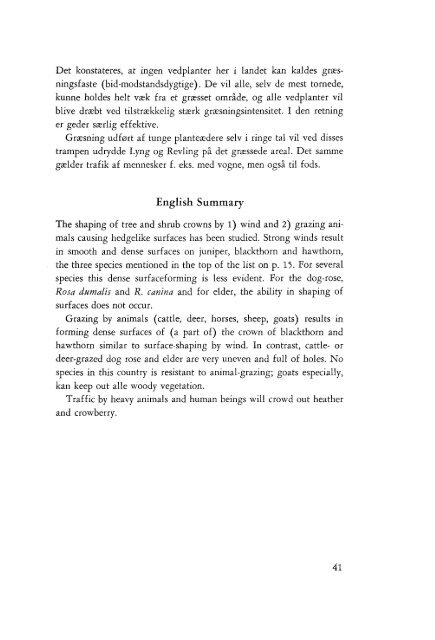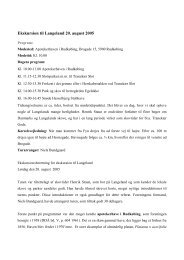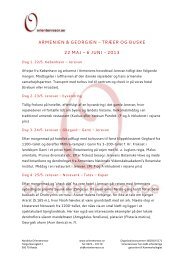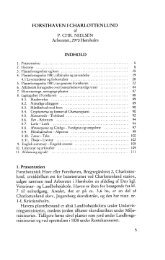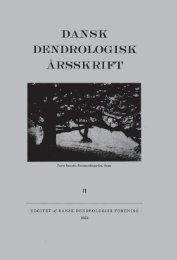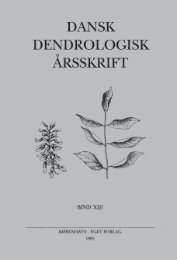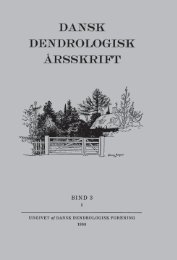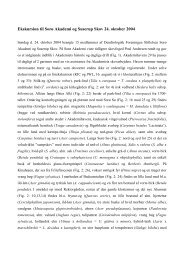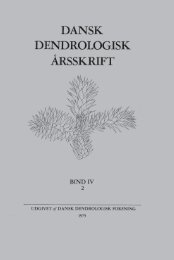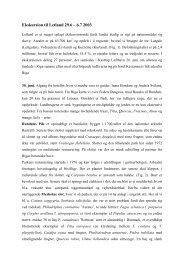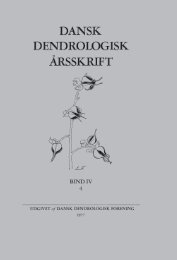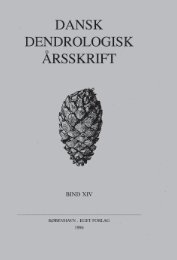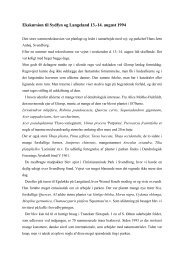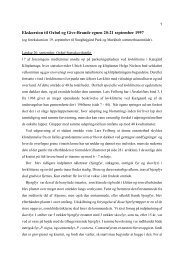Volume 4,1 (1974) - Dansk Dendrologisk Forening
Volume 4,1 (1974) - Dansk Dendrologisk Forening
Volume 4,1 (1974) - Dansk Dendrologisk Forening
Create successful ePaper yourself
Turn your PDF publications into a flip-book with our unique Google optimized e-Paper software.
Det konstateres, at ingen vedplanter her i landet kan kaldes græsningsfaste<br />
(bid-modstandsdygtige). De vil alle, selv de mest tornede,<br />
kunne holdes helt væk fra et græsset område, og alle vedplanter vil<br />
blive dræbt ved tilstrækkelig stærk græsningsintensitet. I den retning<br />
er geder særlig effektive.<br />
Græsning udført af tunge planteædere selv i ringe tal vil ved disses<br />
trampen udrydde Lyng og Revling på det græssede areal. Det samme<br />
gælder trafik af mennesker f. eks. med vogne, men også til fods.<br />
English Summary<br />
The shaping of tree and shrub crowns by 1) wind and 2) grazing animals<br />
causing hedgelike surfaces has been studied. Strong winds result<br />
in smooth and dense surfaces on juniper, blackthorn and hawthorn,<br />
the three species mentioned in the top of the list on p. 15. For several<br />
species this dense surfaceforming is less evident. For the dog-rose,<br />
Rosa dumalis and R. canina and for elder, the ability in shaping of<br />
surfaces does not occur.<br />
Grazing by animals (cattle, deer, horses, sheep, goats) results in<br />
forming dense surfaces of (a part of) the crown of blackthorn and<br />
hawthorn similar to surface-shaping by wind. In contrast, cattle- or<br />
deer-grazed dog rose and elder are very uneven and full of holes. No<br />
species in this country is resistant to animal-grazing; goats especially,<br />
kan keep out alle woody vegetation.<br />
Traffic by heavy animals and human beings will crowd out heather<br />
and crowberry.


